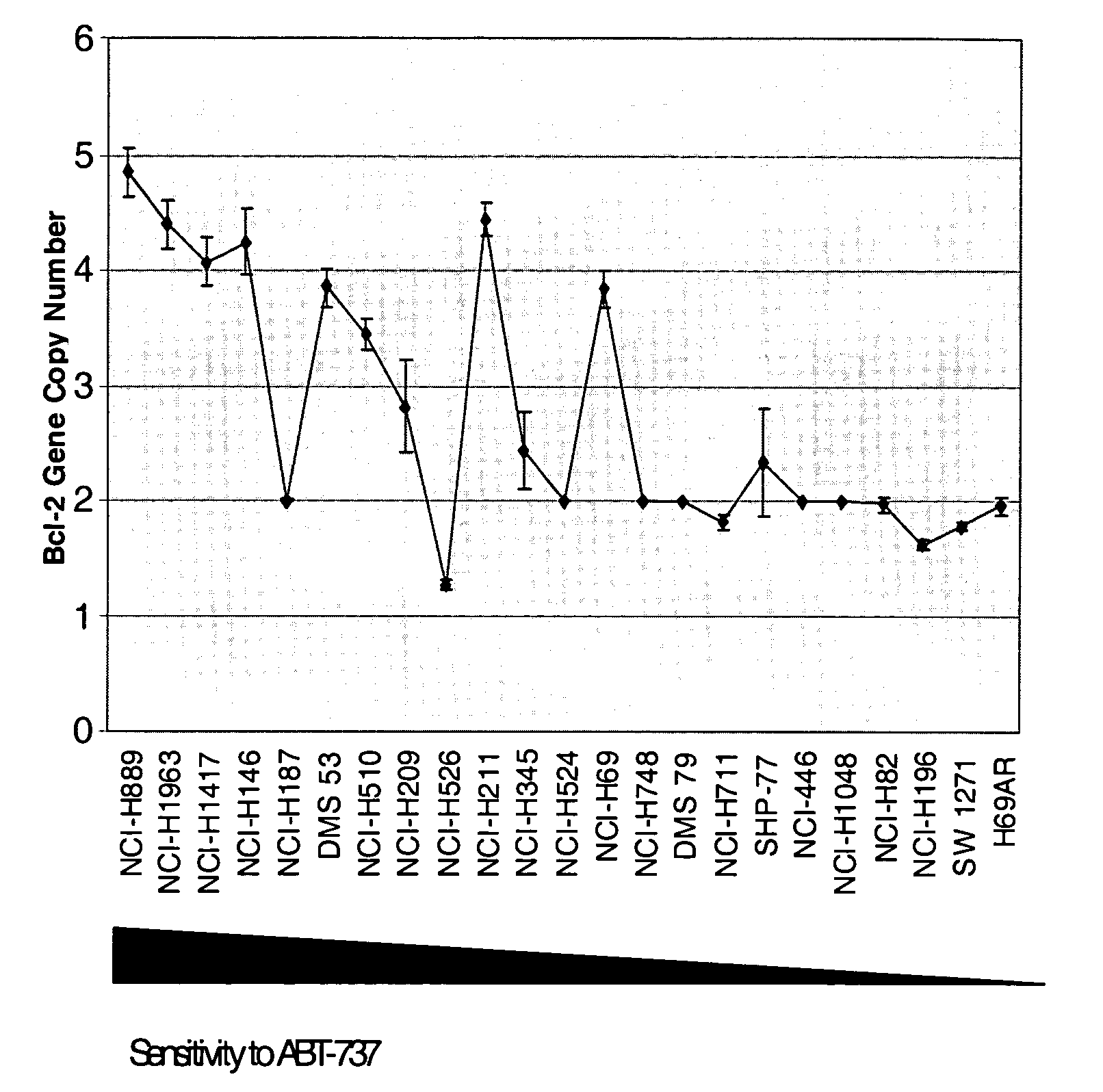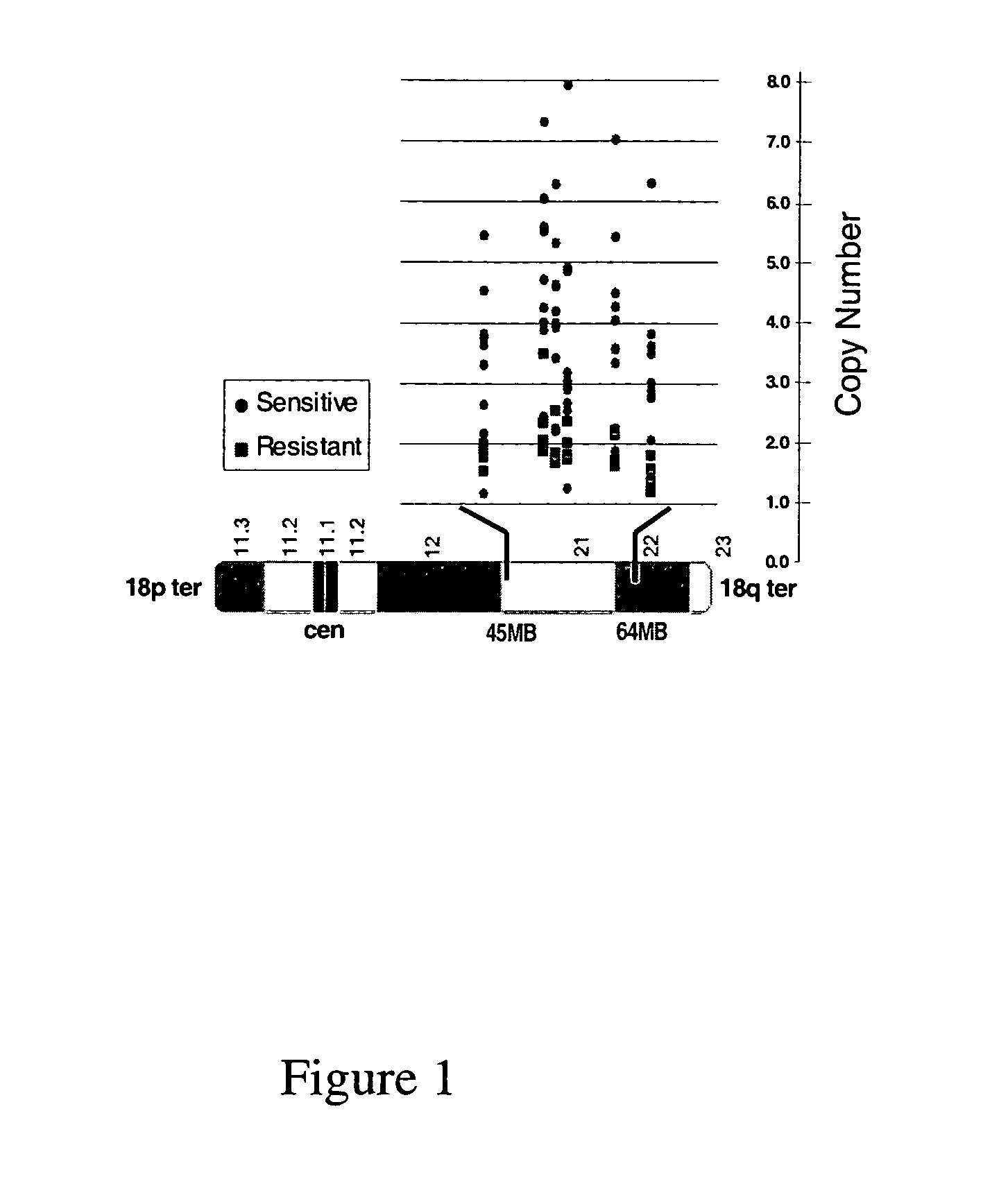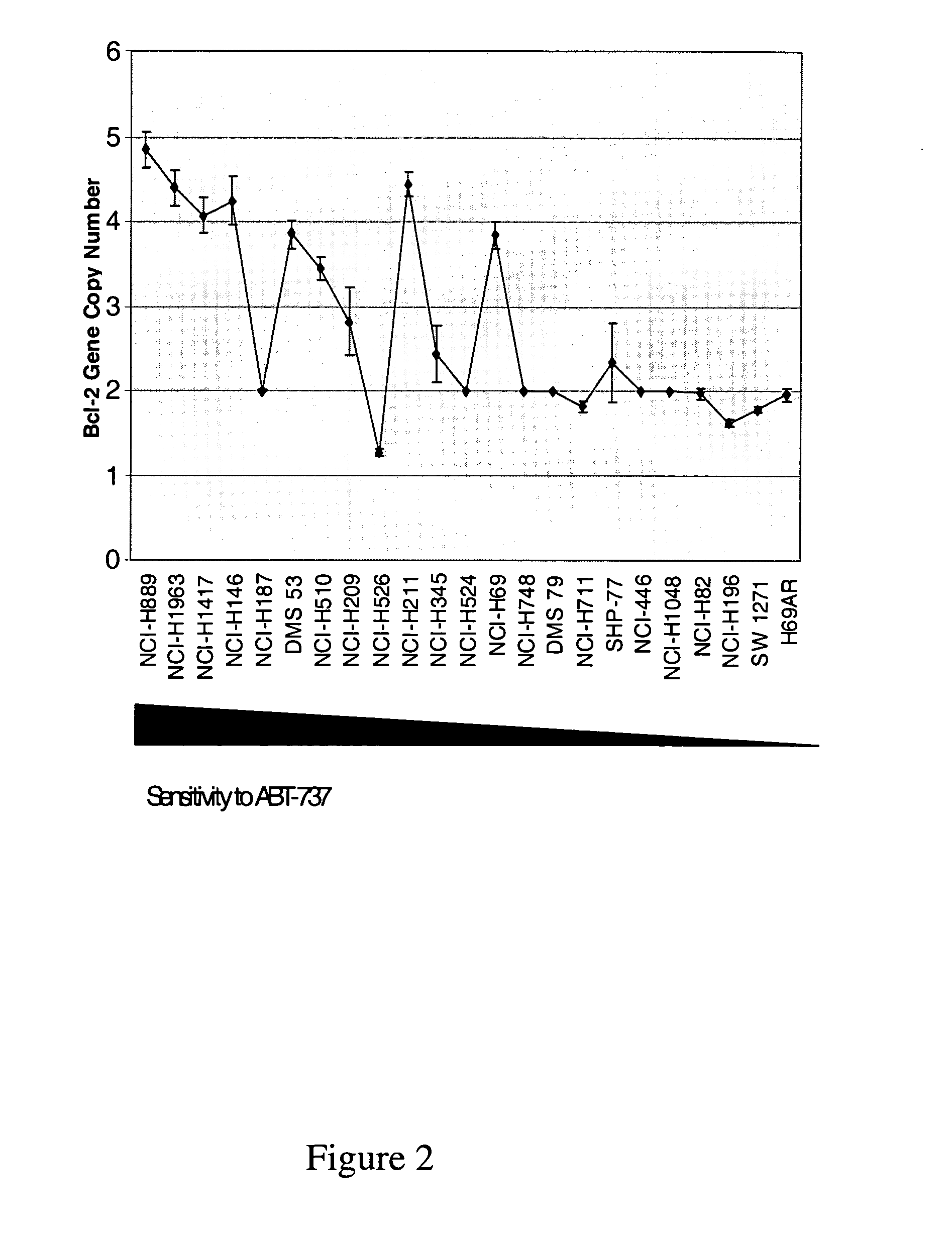Companion diagnostic assays for cancer therapy
a cancer and assay technology, applied in the field of diagnostic assays, can solve the problems of affecting the treatment effect of patients, low survival rate of this subtype, and insignificant improvement, and achieve the effect of improving the stratification of patients and particular utility
- Summary
- Abstract
- Description
- Claims
- Application Information
AI Technical Summary
Benefits of technology
Problems solved by technology
Method used
Image
Examples
Embodiment Construction
[0019]I. General
[0020]The invention is based on the discovery by Applicants of chromosome copy number changes in small cell lung cancer cell lines that correlate to therapy sensitivity. In particular, Applicants correlated chromosome copy number gain at 18q21-q22 to sensitivity to a Bcl-2 family inhibitor. The Bcl-2 gene in this locus is a key regulator of cell survival, and other genes in this locus such as NOXA also impact cell survival. Chromosomal gain at 18q21-q22 can thus mark sensitivity to other cancer therapy, such as other chemotherapy or radiation therapy. In view of the disclosure that the chromosomal locus of miR15a and miR16-1 is deleted in B-cell CLL and that the loss of these microRNA's act as negative regulators of Bcl-2 expression, it is believed that analysis of the copy number at 13q14 can be used to predict response to small molecule Bcl-2 family inhibitors such as ABT-737 and ABT-263.
[0021]As used herein, a “Bcl-2 family inhibitor” refers to a therapeutic compo...
PUM
| Property | Measurement | Unit |
|---|---|---|
| volume | aaaaa | aaaaa |
| temperature | aaaaa | aaaaa |
| nucleic acid | aaaaa | aaaaa |
Abstract
Description
Claims
Application Information
 Login to View More
Login to View More - R&D
- Intellectual Property
- Life Sciences
- Materials
- Tech Scout
- Unparalleled Data Quality
- Higher Quality Content
- 60% Fewer Hallucinations
Browse by: Latest US Patents, China's latest patents, Technical Efficacy Thesaurus, Application Domain, Technology Topic, Popular Technical Reports.
© 2025 PatSnap. All rights reserved.Legal|Privacy policy|Modern Slavery Act Transparency Statement|Sitemap|About US| Contact US: help@patsnap.com



